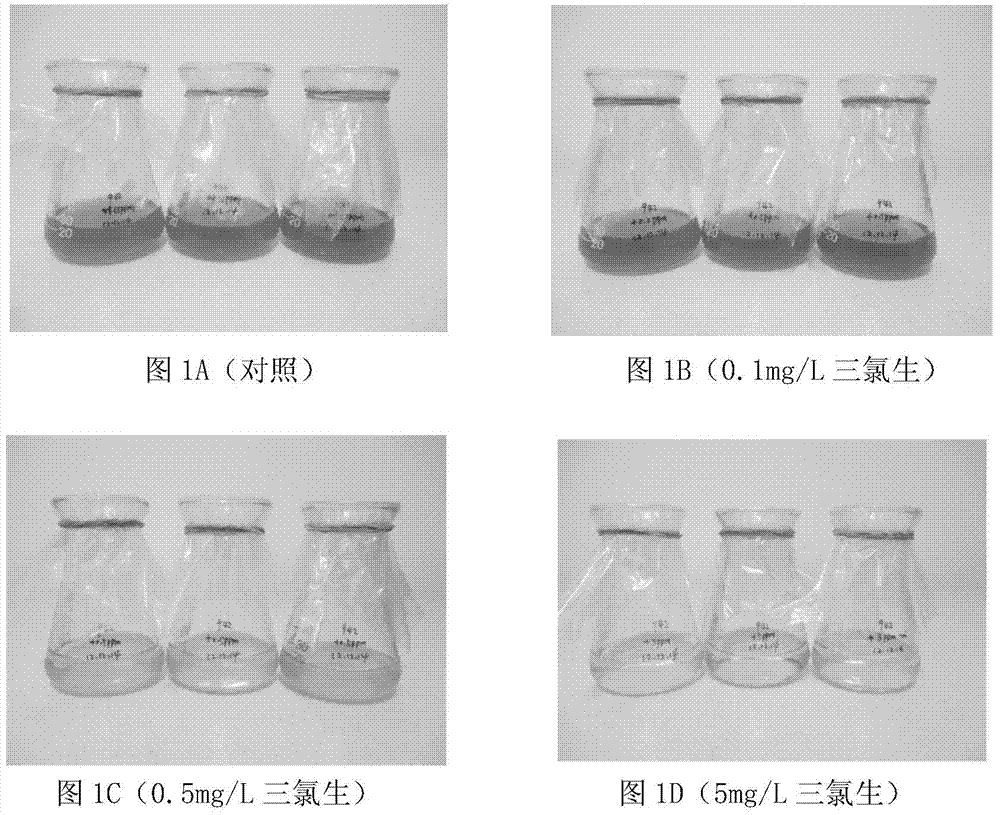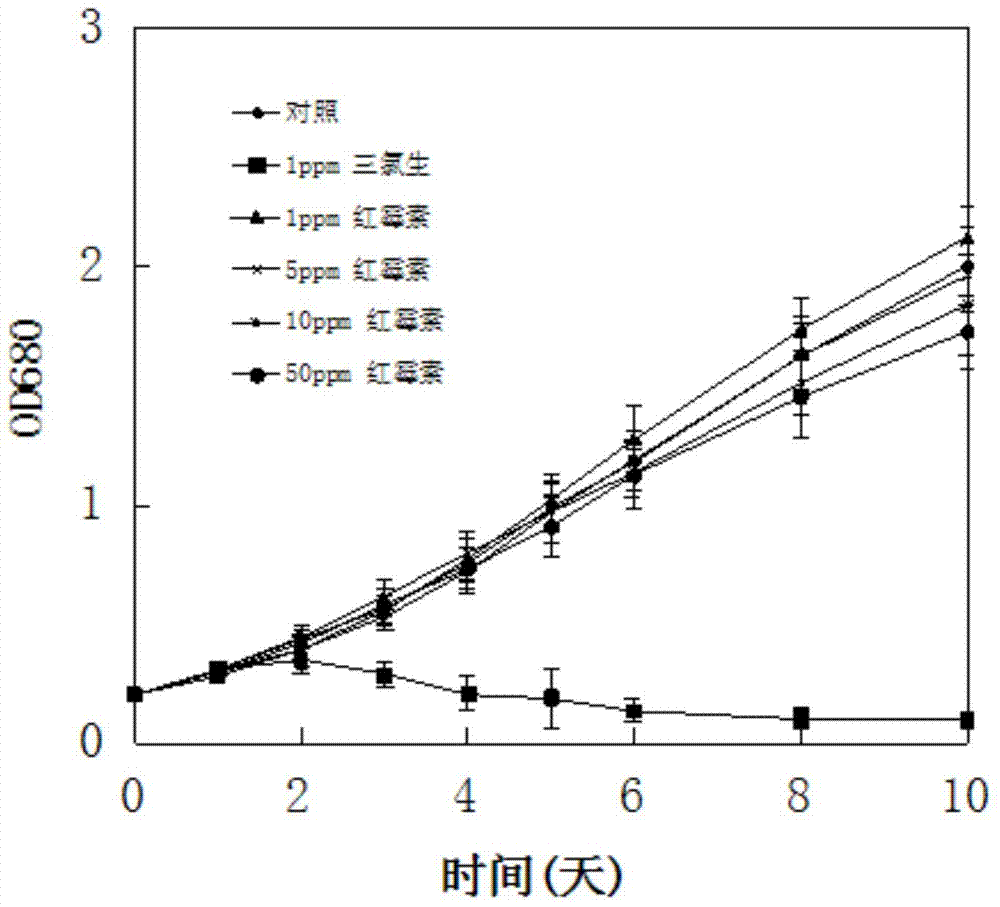Application of algicide for controlling microcystis flos-aquae
A technology of algicide and microcystis, which is applied in the field of algicide to kill and control microcystis blooms, can solve the problems of reduced safety of aquatic products, lack of effective algae control means, and death of aquatic animals, achieving Low concentration, high biological safety, no toxic and side effects
- Summary
- Abstract
- Description
- Claims
- Application Information
AI Technical Summary
Problems solved by technology
Method used
Image
Examples
Embodiment 1
[0037] A kind of application of algicide in killing and controlling microcystis bloom, its steps are:
[0038] 1. In the summer of 2013, the applicant conducted a field test (about 10 liters of water bucket) in the fish pond where Microcystis blooms broke out at the Guanqiao test base of the Institute of Aquatics, and made two triclosan treatment groups (final concentration 5 mg / L and 15 mg / L) and two treatment groups of erythromycin (final concentration of 5 mg / L and 15 mg / L), each treatment group was done in three parallels, before adding triclosan and erythromycin Store them away from light.
[0039] 2. The treatment of triclosan with a final concentration of 5 mg / L is to add 0.5 ml of working mother liquid (for the configuration process of working mother liquid, please refer to the third step of this example) into three barrels and mix them evenly. Similarly, the final concentration is 15 mg / L triclosan is treated by dissolving 1.5 ml of working mother solution (tric...
Embodiment 2
[0047] Bioassay of Triclosan's Killing and Algicidal Activity against Microcystis under Culture Conditions
[0048] figure 1 and figure 2 The results of the bioactivity test of triclosan against microcystis: only 0.5mg / L (one millionth) concentration of triclosan can effectively inhibit the growth of microcystis under laboratory conditions; 1mg / L It can completely inhibit the growth of Microcystis.
[0049] Other implementation steps are the same as in Example 1.
Embodiment 3
[0051] Comparison of the activity of triclosan and the common algicide erythromycin against Microcystis under indoor culture conditions
[0052] image 3 Shows the comparison of the activity of triclosan and the commonly used algicide erythromycin in killing Microcystis under indoor culture conditions.
[0053] Other implementation steps are the same as in Example 1.
PUM
 Login to view more
Login to view more Abstract
Description
Claims
Application Information
 Login to view more
Login to view more - R&D Engineer
- R&D Manager
- IP Professional
- Industry Leading Data Capabilities
- Powerful AI technology
- Patent DNA Extraction
Browse by: Latest US Patents, China's latest patents, Technical Efficacy Thesaurus, Application Domain, Technology Topic.
© 2024 PatSnap. All rights reserved.Legal|Privacy policy|Modern Slavery Act Transparency Statement|Sitemap



